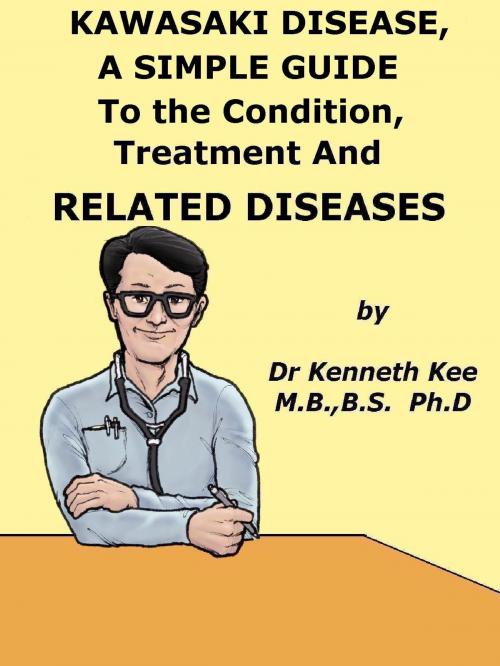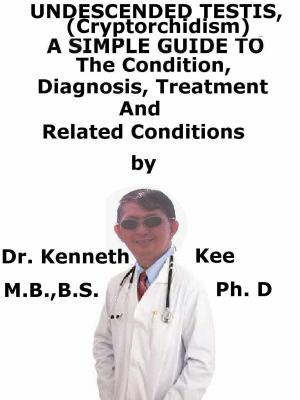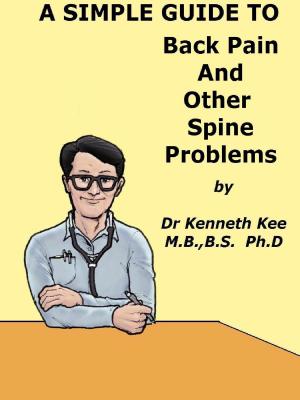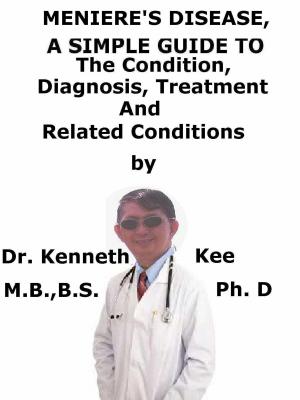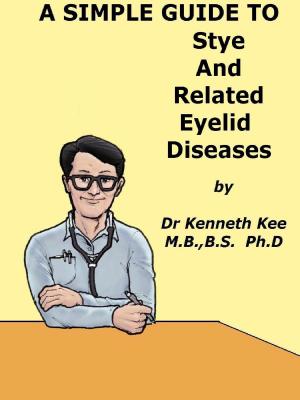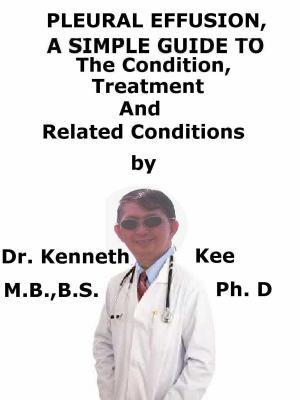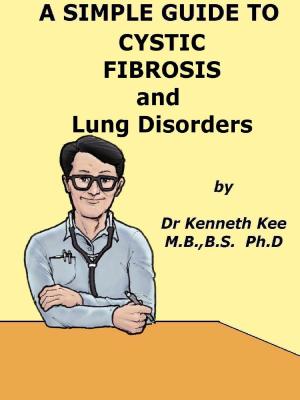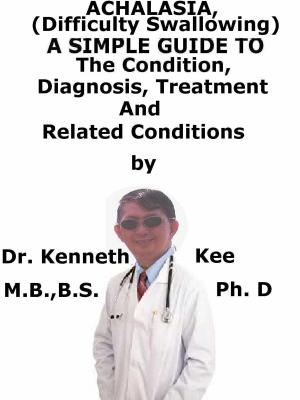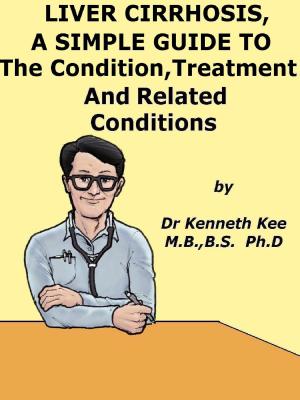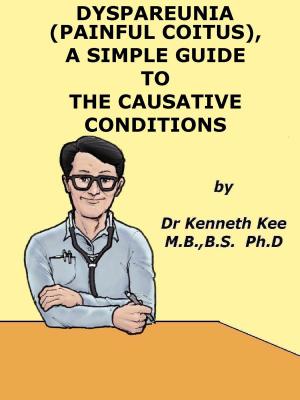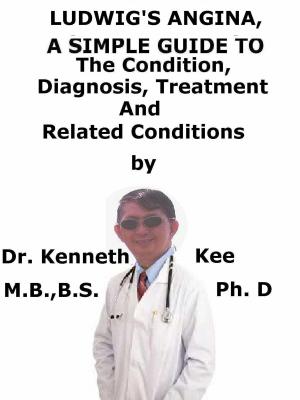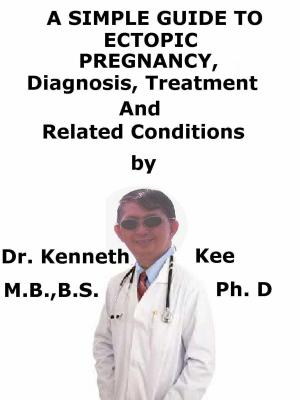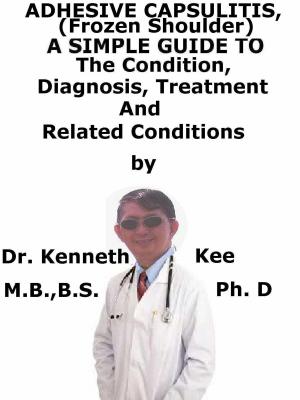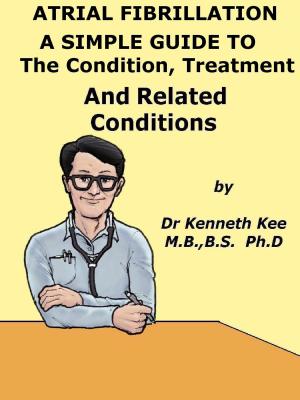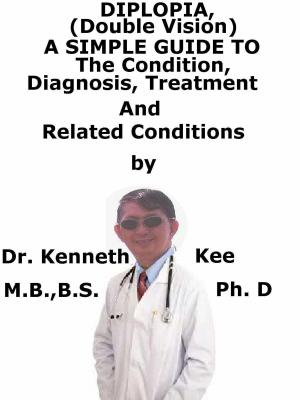Kawasaki Disease, A Simple Guide To the Condition, Treatment And Related Diseases
Nonfiction, Health & Well Being, Medical, Medical Science, Immunology, Health, Ailments & Diseases, Immune System| Author: | Kenneth Kee | ISBN: | 9781311464651 |
| Publisher: | Kenneth Kee | Publication: | February 20, 2015 |
| Imprint: | Smashwords Edition | Language: | English |
| Author: | Kenneth Kee |
| ISBN: | 9781311464651 |
| Publisher: | Kenneth Kee |
| Publication: | February 20, 2015 |
| Imprint: | Smashwords Edition |
| Language: | English |
Kawasaki Disease is a childhood disease
The disease occur in children of all ages
It typically cause fever and lymph node swellings
Mostly it causes the skin to start peeling.
Patients present with first with fever then skin and eye dryness
There may be also swelling of feet and hand with redness
There is also sore throat with sometimes tonsillar swelling
This is followed by red rash with skin peeling
Diagnosis is by symptoms and elimination of other diseases
Electrocardiography may be done to check on heart myopathy
Complications are vasculitis, coronary heart disease and arthritis
There may be also blood vessel aneurysm and myocarditis
Treatment is usually with immunogammaglobulin
Aspirin is also used under proper doctor’s supervision
Corticosteroids is useful to treat arthritis and myocarditis
Most children make a full recovery after about 3 weeks
-An original poem by Kenneth Kee
Interesting Tips about the Kawasaki Disease
A Healthy Lifestyle
-
Take a well Balanced Diet
-
Suspected cases should be treated as early as possible because of possible heart complications
a. Bed rest in isolation ward
b. Adequate fluids
c. Antipyretic medicines such as paracetamol for fever
d. Aspirin may be given (in spite of the danger of Reyes Syndrome) to prevent blockage of the coronary artery of the heart.
e. Injections of gamma globulin are the main treatment for Kawasaki disease.
f. Corticosteroids is useful to reduce complications such as arthritis and myocarditis
Prognosis of Kawasaki Disease is generally good.
Most children make a full recovery after about 3 weeks.
Myocarditis and arthritis may last for 6 to 8 weeks.
Coronary artery disease improves gradually over 1 year
- Keep bones and body strong
Bone marrow produces our blood
Eat foods rich in calcium like yogurt, cheese, milk, and dark green vegetables.
Eat foods rich in Vitamin D, like eggs, fatty fish, cereal, and fortified milk.
Eat food rich in Vitamins B and C such as green vegetables and fruits
Zinc and other minerals are important to the body
- Get enough rest and Sleep
Avoid stress and tension
- Exercise and stay active.
It is best to do weight-bearing exercise such as walking, jogging, stair climbing, dancing, or lifting weights for 2½ hours a week.
One way to do this is to be active 30 minutes a day at least 5 days a week.
Begin slowly especially if a person has not been active.
- Do not drink more than 2 alcohol drinks a day for a man or 1 alcohol drink a day for a woman.
Alcohol use also increases the chance of falling and breaking a bone.
Alcohol can affect the neurons and brain cells.
- Stop or do not begin smoking.
It also interferes with blood supply and healing.
Chapter 1
Kawasaki Disease
What is Kawasaki Disease?
Kawasaki Disease is a childhood disease which was first seen in Japan which typically causes fever, swelling of the lymph nodes, and symptoms affecting the skin and mucous membranes.
Approximately 3000 children with Kawasaki disease are hospitalized annually in the United States.
Kawasaki disease is a rare childhood illness that affects the blood vessels.
It occurs mainly in children below 5 years.
It is most common in children ages 1 to 2 years and less common in children older than age 8.
It does not spread from child to child (is not contagious).
The disease happens most often in the late winter and early spring.
The symptoms can be severe for several days and can look scary to parents.
But then most children return to normal activities.
One of its notable features other than high fever and skin peeling is the complication of the disease on the arterial system of the heart.
Introduction
Chapter 1 Kawasaki Disease
Chapter 2 More Facts of Kawasaki Disease
Chapter 3 Treatment of Kawasaki Disease
Chapter 4 Fever
Chapter 5 Vasculitis
Chapter 6 Reye Syndrome
Chapter 7 Measles
Chapter 8 Infectious Mononucleosis
Kawasaki Disease is a childhood disease
The disease occur in children of all ages
It typically cause fever and lymph node swellings
Mostly it causes the skin to start peeling.
Patients present with first with fever then skin and eye dryness
There may be also swelling of feet and hand with redness
There is also sore throat with sometimes tonsillar swelling
This is followed by red rash with skin peeling
Diagnosis is by symptoms and elimination of other diseases
Electrocardiography may be done to check on heart myopathy
Complications are vasculitis, coronary heart disease and arthritis
There may be also blood vessel aneurysm and myocarditis
Treatment is usually with immunogammaglobulin
Aspirin is also used under proper doctor’s supervision
Corticosteroids is useful to treat arthritis and myocarditis
Most children make a full recovery after about 3 weeks
-An original poem by Kenneth Kee
Interesting Tips about the Kawasaki Disease
A Healthy Lifestyle
-
Take a well Balanced Diet
-
Suspected cases should be treated as early as possible because of possible heart complications
a. Bed rest in isolation ward
b. Adequate fluids
c. Antipyretic medicines such as paracetamol for fever
d. Aspirin may be given (in spite of the danger of Reyes Syndrome) to prevent blockage of the coronary artery of the heart.
e. Injections of gamma globulin are the main treatment for Kawasaki disease.
f. Corticosteroids is useful to reduce complications such as arthritis and myocarditis
Prognosis of Kawasaki Disease is generally good.
Most children make a full recovery after about 3 weeks.
Myocarditis and arthritis may last for 6 to 8 weeks.
Coronary artery disease improves gradually over 1 year
- Keep bones and body strong
Bone marrow produces our blood
Eat foods rich in calcium like yogurt, cheese, milk, and dark green vegetables.
Eat foods rich in Vitamin D, like eggs, fatty fish, cereal, and fortified milk.
Eat food rich in Vitamins B and C such as green vegetables and fruits
Zinc and other minerals are important to the body
- Get enough rest and Sleep
Avoid stress and tension
- Exercise and stay active.
It is best to do weight-bearing exercise such as walking, jogging, stair climbing, dancing, or lifting weights for 2½ hours a week.
One way to do this is to be active 30 minutes a day at least 5 days a week.
Begin slowly especially if a person has not been active.
- Do not drink more than 2 alcohol drinks a day for a man or 1 alcohol drink a day for a woman.
Alcohol use also increases the chance of falling and breaking a bone.
Alcohol can affect the neurons and brain cells.
- Stop or do not begin smoking.
It also interferes with blood supply and healing.
Chapter 1
Kawasaki Disease
What is Kawasaki Disease?
Kawasaki Disease is a childhood disease which was first seen in Japan which typically causes fever, swelling of the lymph nodes, and symptoms affecting the skin and mucous membranes.
Approximately 3000 children with Kawasaki disease are hospitalized annually in the United States.
Kawasaki disease is a rare childhood illness that affects the blood vessels.
It occurs mainly in children below 5 years.
It is most common in children ages 1 to 2 years and less common in children older than age 8.
It does not spread from child to child (is not contagious).
The disease happens most often in the late winter and early spring.
The symptoms can be severe for several days and can look scary to parents.
But then most children return to normal activities.
One of its notable features other than high fever and skin peeling is the complication of the disease on the arterial system of the heart.
Introduction
Chapter 1 Kawasaki Disease
Chapter 2 More Facts of Kawasaki Disease
Chapter 3 Treatment of Kawasaki Disease
Chapter 4 Fever
Chapter 5 Vasculitis
Chapter 6 Reye Syndrome
Chapter 7 Measles
Chapter 8 Infectious Mononucleosis
